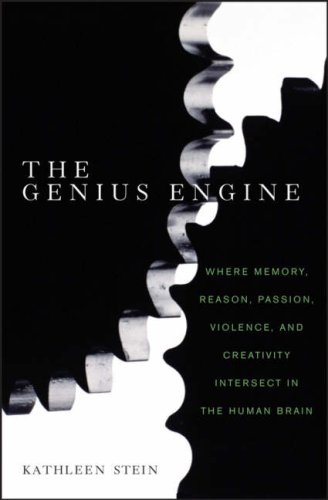
The Genius Engine
Where Memory, Reason, Passion, Violence, and Creativity Intersect in the Human Brain
کتاب های مرتبط
- اطلاعات
- نقد و بررسی
- دیدگاه کاربران
نقد و بررسی

November 27, 2006
As neuroscientists refine their understanding of how the human brain works, the prefrontal cortex (PFC) has been shown to play a powerful role. As the brain's "central executive," the PFC is responsible for handling all kinds of thought processes, from sorting through short-term memories to understanding jokes.Stein, the former neuroscience editor for Omni
, uses interviews with a wide array of brain researchers as the foundation for her overview, explaining the significance of their research. While the ramifications of each line of study—establishing the PFC's role in everything from emotional intelligence to the suppression of violence—are significant, Stein has difficulty bringing them all together into a dynamic, involving story. And while she does provide a few pictures of the prefrontal and cerebral cortices at the beginning of the book, the lack of illustrations in the text makes it harder to understand the relationships among the areas of the brain she discusses. The science is solid, but the account lacks the welcoming quality of recent works by other brain specialists such as Steven Johnson and John Horgan.

December 1, 2006
Reporting on contemporary activity in experimental neuroscience, journalist Stein parlays interviews with researchers into a survey of the human brain's prefrontal cortex (PFC). This is the organ's outer layer situated directly behind the brow ridge. Explaining that pioneering anatomists noticed that injuries to the PFC altered personalities, Stein's account of specialists' projects illustrates the range of human behavior that seems to be associated with the PFC. Their projects, sometimes clinical studies of patients, sometimes laboratory tests on volunteers, benefit from brain-imaging technology, which, relates Stein, hints at the neural location for such traits as social skills. Logic, creativity, and inhibition and foresight also seem to arise from the PFC, which scientists accordingly map into "Brodmann areas." Among things to be learned from Stein: the microanatomical detail of Brodmann areas, and the great problem still to be solved in neuroscience, the exact relationship between neural deficits in the PFC and behavioral problems such as criminal violence. An informative introduction to the work of the field's leading experts.(Reprinted with permission of Booklist, copyright 2006, American Library Association.)

























دیدگاه کاربران